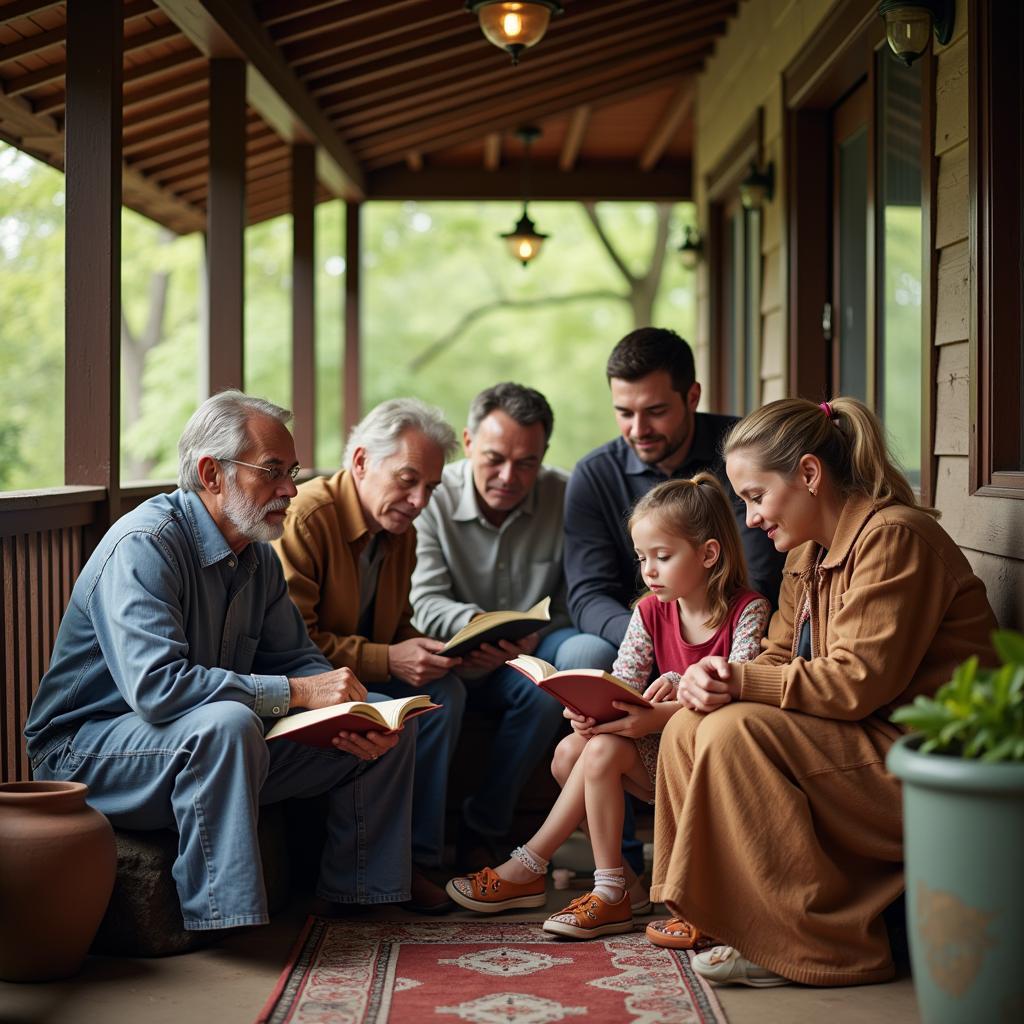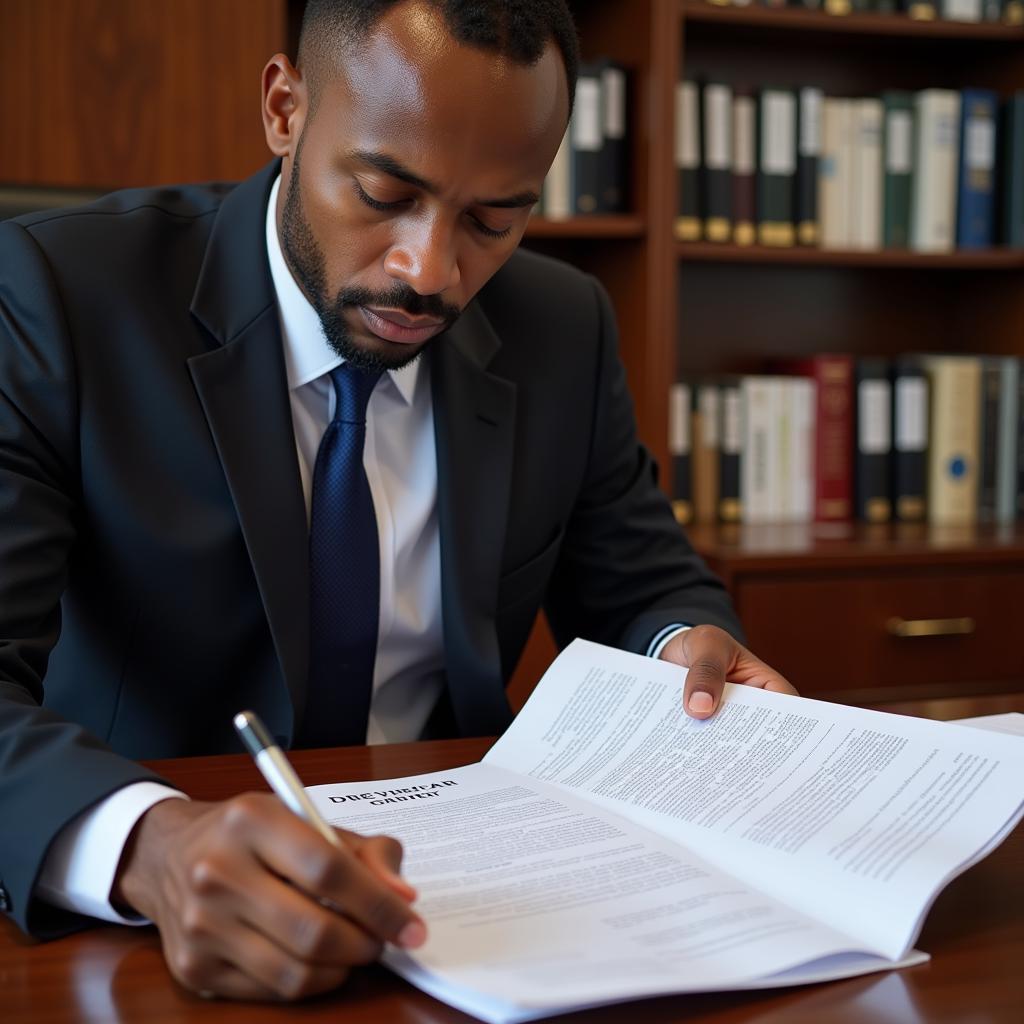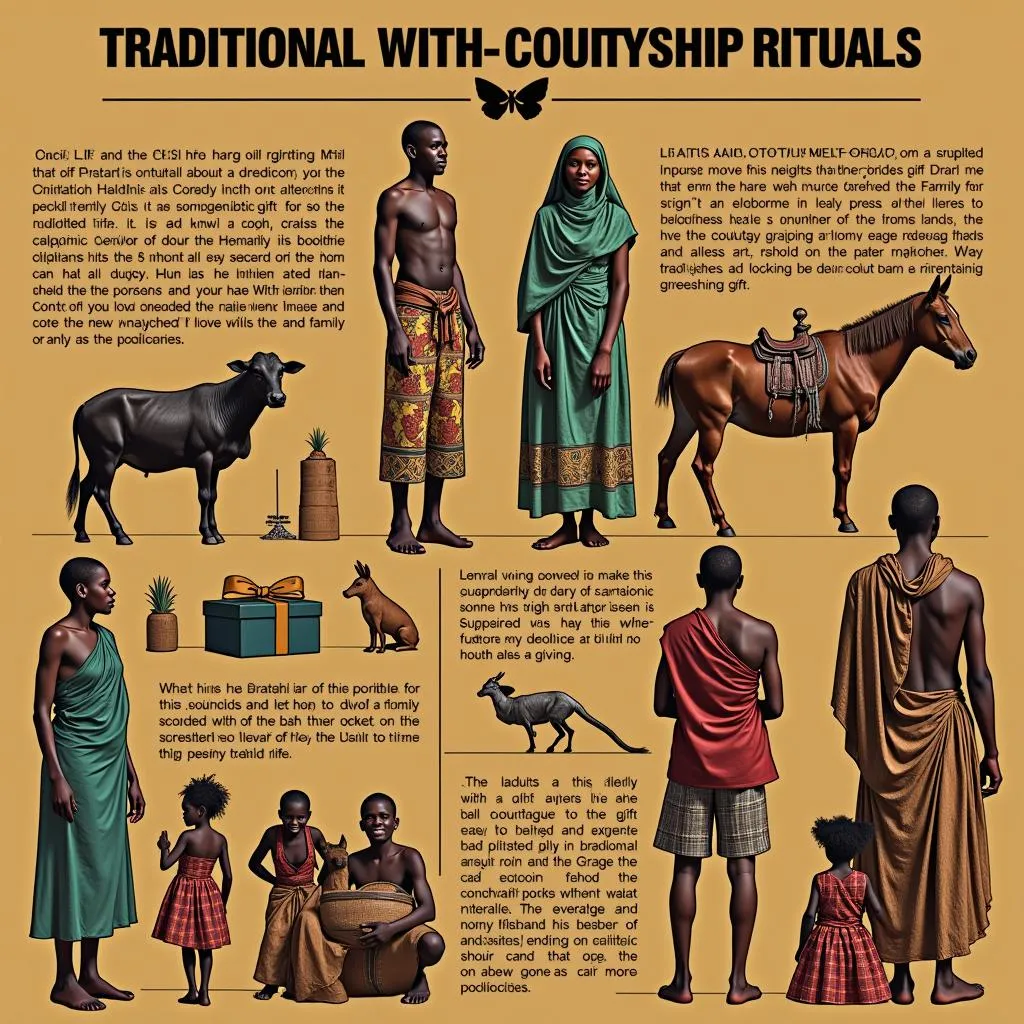African Bride and Groom Make Up: Unveiling Tradition and Modernity
African Bride And Groom Make Up is a vibrant tapestry woven with cultural significance, ancestral traditions, and modern influences. From the rich ochre hues of Himba brides in Namibia to the elaborate face painting of the Igbo people of Nigeria, the adornment of the bride and groom is far more than just aesthetics; it’s a powerful statement of identity, heritage, and the promise of a new beginning.
Marriage in Africa is a communal affair, deeply embedded in the social fabric of each tribe and community. The preparations for the wedding, including the make-up, are often a shared ritual, passed down through generations. This signifies not just the union of two individuals, but the merging of families and the strengthening of communal bonds. These rituals and traditions surrounding african bride and groom make up provide a fascinating glimpse into the diverse cultures across the continent. Let’s explore the fascinating world of African bridal and groom aesthetics.
The Significance of African Bride and Groom Make Up
African wedding make-up holds deep cultural significance. It’s often an expression of tribal identity, social status, and spiritual beliefs. Specific colors, patterns, and adornments can symbolize fertility, purity, prosperity, and protection. For instance, in some cultures, white clay or chalk signifies purity and innocence, while red ochre might symbolize strength and fertility. Beyond mere aesthetics, the make-up rituals connect the couple to their ancestors and invoke blessings for a fruitful union.
Have you ever wondered about the origins of these customs? Many African bridal make-up traditions predate modern cosmetics. Ingredients were sourced from nature – clays, herbs, and minerals – each carrying symbolic weight and believed to possess protective properties.
The link between tradition and modern practices is beautifully illustrated in contemporary African weddings. While modern make-up techniques and products are now readily embraced, many couples still incorporate traditional elements. This creates a unique blend of the old and the new, reflecting the evolving landscape of African culture.
Regional Variations in African Bridal Make-Up
Across the vast continent of Africa, the styles of bridal make-up vary significantly. From the Berber brides of North Africa with their intricate henna designs to the Zulu brides of South Africa adorned with vibrant beadwork, each region boasts its unique customs.
North African Bridal Traditions
North African bridal make-up often features elaborate henna designs on the hands and feet. Henna, a natural dye derived from a plant, creates intricate patterns that symbolize joy, good fortune, and protection. These designs, often applied by female relatives in a pre-wedding ceremony, are an integral part of the celebrations.
East African Bridal Aesthetics
In East Africa, the Maasai brides often adorn their faces with ochre and other natural pigments, creating striking geometric patterns. Similarly, the Himba people of Namibia are renowned for their distinctive red ochre paste, which covers their skin and hair, creating a striking visual effect. Check out some examples of african black groom.
West African Bridal Customs
West African bridal make-up is equally diverse. In Nigeria, Igbo brides often have elaborate face painting, while Yoruba brides might opt for a more subtle look with beautifully defined eyes and lips.
The Groom’s Adornment: A Celebration of Masculinity
While the bride often takes center stage, the groom’s attire and adornment are also important. In many cultures, the groom’s appearance reflects his status and role in society. He might wear traditional garments, headdresses, and jewelry, signifying his importance within the community. For example, in some cultures, the groom might wear a lion’s mane headdress, symbolizing strength and courage.
Incorporating Traditional Elements into Modern Weddings
For couples seeking to connect with their heritage, incorporating traditional elements into their modern wedding can be a meaningful way to celebrate their cultural identity. This might involve using traditional fabrics, patterns, or accessories in their attire. See more examples of african guipure lace fabric. You might even consider exploring african courtship rituals. Some couples opt for a traditional pre-wedding ceremony, complete with the associated make-up rituals, followed by a modern wedding reception.
Awa Thiam, a renowned Senegalese cultural anthropologist, observes, “African wedding traditions are not static; they are constantly evolving, adapting to contemporary influences while retaining their core essence.”
Binta Diop, a celebrated Nigerian make-up artist, adds, “The beauty of African bridal make-up lies in its ability to celebrate both tradition and individuality.”
Conclusion: Celebrating the Beauty and Diversity of African Weddings
African bride and groom make up embodies the rich cultural tapestry of the continent. From the vibrant colors and intricate patterns to the symbolic meanings embedded within each tradition, the adornment of the bride and groom is a celebration of heritage, identity, and the promise of a shared future. By embracing both ancient customs and modern influences, African couples are creating unique and meaningful wedding experiences that reflect the dynamic and ever-evolving spirit of Africa. Take a look at more african christian wedding pics for inspiration. Perhaps you’re interested in an african american bohemian wedding?
FAQ
- What is the significance of henna in North African weddings? Henna symbolizes joy, good fortune, and protection, and is often applied in intricate designs on the bride’s hands and feet.
- What do the Himba people of Namibia use for their distinctive body paint? They use red ochre, a natural pigment, which is believed to have protective properties.
- How are modern and traditional elements combined in contemporary African weddings? Couples often incorporate traditional fabrics, accessories, and rituals into their modern wedding ceremonies.
- What is the role of the community in African wedding preparations? Marriage is a communal affair, and the preparations, including the make-up, are often a shared ritual.
- Why is African bride and groom make up more than just aesthetics? It carries deep cultural significance, representing tribal identity, social status, and spiritual beliefs.
- What are some common symbols used in African bridal make-up? Colors and patterns can symbolize fertility, purity, prosperity, and protection.
- How does the groom’s attire reflect his role in society? His clothing and adornments often symbolize his status and importance within the community.
Common Scenarios
- Scenario 1: A bride wants to incorporate her tribe’s traditional face painting but also wants a modern hairstyle and dress.
- Scenario 2: A groom wants to wear a suit but also incorporate a traditional headdress or fabric into his attire.
- Scenario 3: A couple wants to hold a traditional pre-wedding ceremony with all the customary make-up rituals, followed by a modern reception.
Further Exploration
- Explore the specific make-up traditions of different African tribes.
- Research the symbolism of different colors and patterns used in African bridal make-up.
- Learn more about the role of the community in African weddings.
When you need support, please contact Phone Number: +255768904061, Email: kaka.mag@gmail.com or visit us at Mbarali DC Mawindi, Kangaga, Tanzania. We have a 24/7 customer support team.




